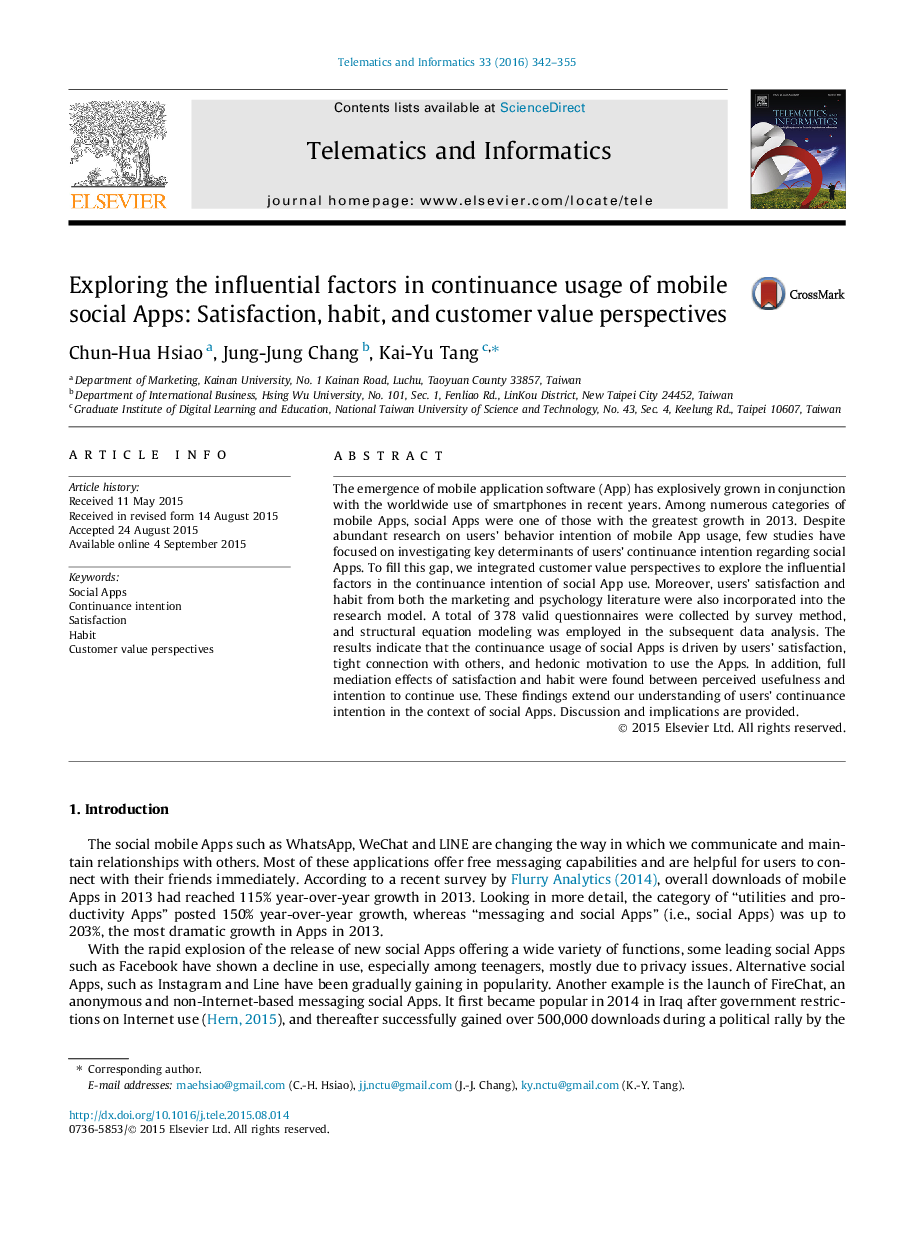| کد مقاله | کد نشریه | سال انتشار | مقاله انگلیسی | نسخه تمام متن |
|---|---|---|---|---|
| 466015 | 697749 | 2016 | 14 صفحه PDF | دانلود رایگان |
کلمات کلیدی
1. مقدمه
2. توسعه فرضیهها و سابقه نظری
2.1 مرور پژوهش گذشته درباره کاربردهای تلفن همراه
شکل 1. چارچوب تحقیقاتی
2.2 رضایت و قصد مستمر
2.3 قصد مستمر و عادت
2.4. دیدگاههای ارزش مشتری
2.4.1 انگیزه سودمندی
2.4.2 انگیزه لذت
2.4.3 اثر اجتماعی
3. روششناسی
3.1 مشارکت کنندگان و روش
3.2 سنجش سازهها
4. نتایج تجربی
4.1 سنجش ارزیابی
4.2 نتایج مدل ساختاری
4.3 آزمون برای واسطه گری
جدول 1. بارگذاریهای استانداردشده و سنجشهای قابلیت اطمینان
جدول 2. آمارهای توصیفی، واریانس توضیح داده شده و همبستگیها
جدول 3. آزمون تمایز مربع کای
5. بحث
جدول 4. ضرایب مسیر و ارزش t
جدول 5. آنالیز اثرات واسطهگری
جدول 6. آنالیز اثرات غیرمستقیم
6. استنباطها و نتایج
ضمیمه . سنجش سازه
• Mobile social Apps have exponentially changed the way people communicate.
• Three antecedents (utilitarian, hedonic, and social perspectives) were examined.
• User satisfaction and habitual use were successfully explained by all antecedents.
• Continuance usage was driven by satisfaction, habitual use, and two other factors.
• The mediation effects of satisfaction and habitual use were found.
The emergence of mobile application software (App) has explosively grown in conjunction with the worldwide use of smartphones in recent years. Among numerous categories of mobile Apps, social Apps were one of those with the greatest growth in 2013. Despite abundant research on users’ behavior intention of mobile App usage, few studies have focused on investigating key determinants of users’ continuance intention regarding social Apps. To fill this gap, we integrated customer value perspectives to explore the influential factors in the continuance intention of social App use. Moreover, users’ satisfaction and habit from both the marketing and psychology literature were also incorporated into the research model. A total of 378 valid questionnaires were collected by survey method, and structural equation modeling was employed in the subsequent data analysis. The results indicate that the continuance usage of social Apps is driven by users’ satisfaction, tight connection with others, and hedonic motivation to use the Apps. In addition, full mediation effects of satisfaction and habit were found between perceived usefulness and intention to continue use. These findings extend our understanding of users’ continuance intention in the context of social Apps. Discussion and implications are provided.
Journal: Telematics and Informatics - Volume 33, Issue 2, May 2016, Pages 342–355
